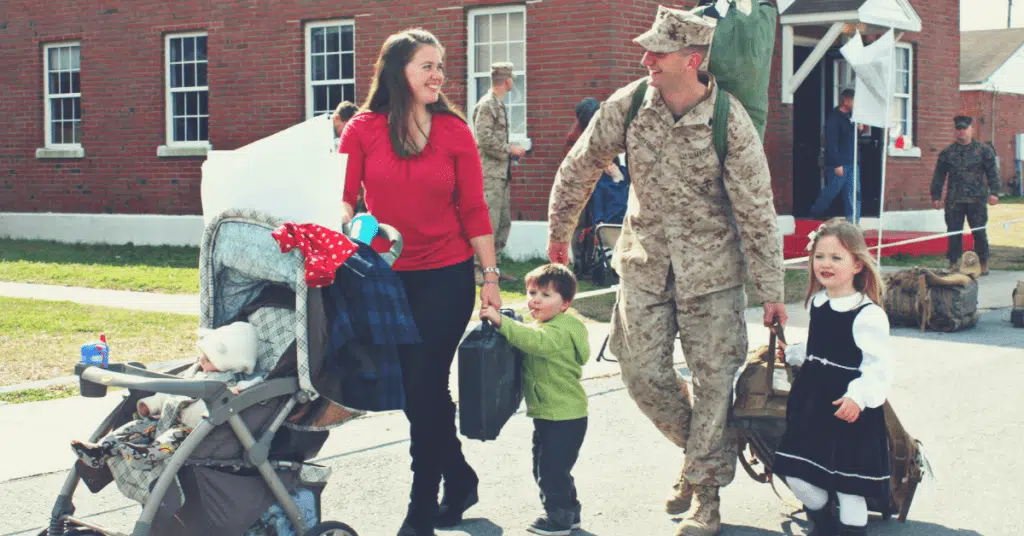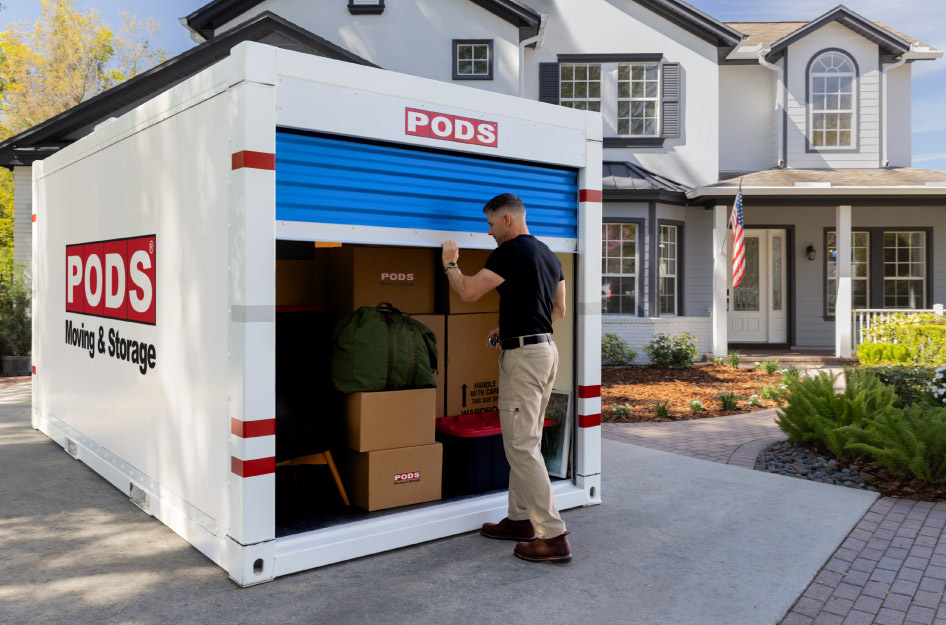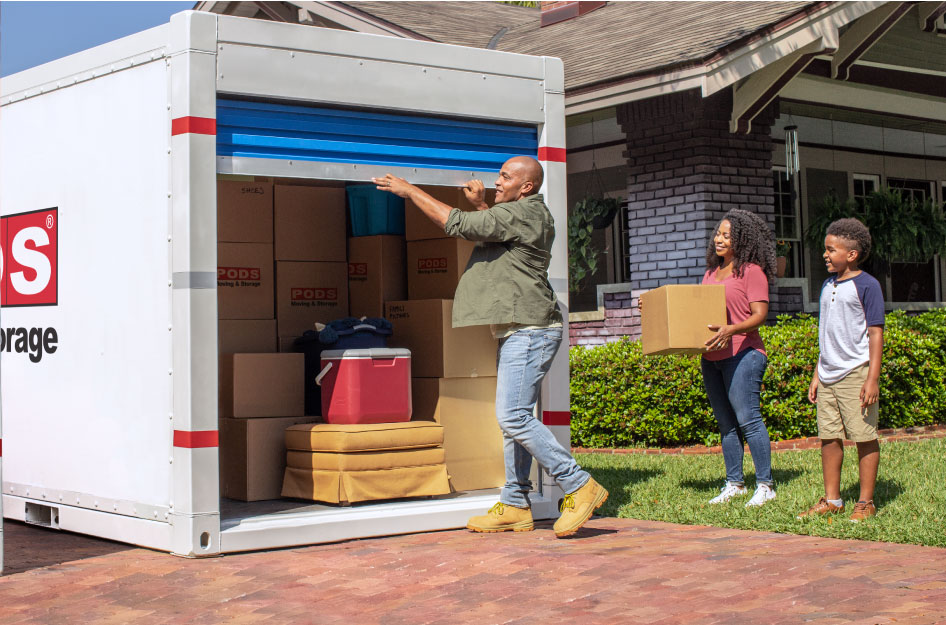
If you’ve recently received a military permanent change of station (PCS), then you’re definitely gearing up to move yourself, your partner, and even your family to a new state or a new country. And while this can be incredibly exciting, military PCS moves can also be stressful — especially if you need to complete a move in a short period of time. Wondering if a DITY move, or even a partial DITY move, is right for you? Here’s what you need to know to help you decide.
PODS is proud to serve the men and women who serve our country. Active, Retired, and Veteran members of the military receive a PODS military discount. For PPM/DITY moves or storage during deployments, call 866-556-9574. *Offer available for new orders only. Must mention promotional code at time of order (find the code here). Cannot be combined with any other offer. Offer void where prohibited by law. Available for a limited time, only at participating locations. Excludes special and exclusive promotions. |
First: What is a DITY move?
This is a type of “do-it-yourself” military move that allows service members and their families to pack up their items, move them to a new location, and then receive a monetary entitlement of up to 100 percent of what their job would have cost the government. This gives you the flexibility to pick a move that fits your needs best and the chance to pocket whatever money is left over.
What Does a DITY Move Entail?
A DITY move (also referred to as a PPM) allows you to take full control of packing, loading, and transporting your items to your new station. If you make arrangements with your transportation office and apply for this type of move, you can be compensated afterward. Although we’ll get into more detail later in the article, your compensation will be based on the weight of your household items, mileage, gas, service member rank, and number of dependents.
Lots of service members like to go this route because it allows them the freedom to choose how they move, whether that’s with a moving truck or by partnering with a military moving and storage specialist. There are plenty of advantages to opting for this type of move (even if you’re undergoing an off-season PCS move), including the potential to make some money back in the process.
However, it can be a little overwhelming and stressful at times to pack everything up yourself and take it to your new home, which is why we’ve laid out all the steps you need to take for a DITY move. But first, let’s briefly discuss some of the other kinds of moves you can make with the military when you receive a permanent change of station.
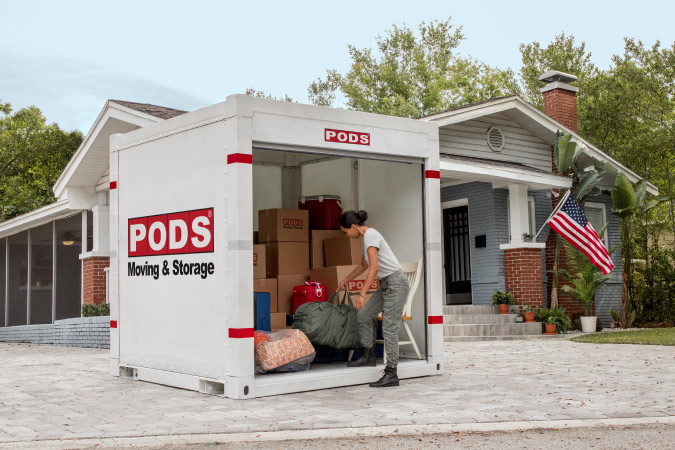
What is a DITY move? It’s one that allows military members to be reimbursed for handling their own relocation rather than using government contractors.
Types of Military Moves
Government PCS Move/HHG Move
Selecting the full government PCS move (also called a Household Goods — or HHG — Move) means you don’t have to worry about packing, loading, or arranging your own moving transportation — and the government pays for the process. Your service branch’s moving office will take care of the details and assign a Transportation Service Provider (TSP) to help you pack and ship your household items. They’ll load everything onto their trucks and drive them to your new home. The best part? They’ll unpack everything, too! This can be very convenient, but you’ll have to stay within PCS weight allowance, and there’s always the risk of something getting damaged or broken along the way.
Personally Procured Move (PPM)
This is another name for a DITY move, and it puts you in control of how you pack, what you pack, and how you transport your belongings to your new station. Most importantly, you have the opportunity to make money by getting reimbursed for your moving and travel expenses.
| Q: How much does a DITY move pay? A: You will be reimbursed up to 100 percent of what it would have cost the government to procure a full-service PCS move for you. This is for authorized expenses only and is dependent on the mileage you're going and the weight of your items in a truck or storage container. This can also vary depending on the service member’s rank and number of dependents. Can you make money on a DITY move ? Yes, because you’re paid on the weight of your shipment and the distance moved. You make money if your actual moving costs (like truck rental, fuel, and supplies) are less than the payment you receive from the government. The more you can do yourself for less money, the more you can keep as profit. |
Partial DITY Move
A Partial DITY move is a military relocation where service members move a portion of their household goods themselves, and the government professionally moves the rest of their belongings. A partial DITY move allows the military member to earn reimbursement for the weight they move personally, while the military handles the remainder. The weight allowance will be split between the two types of transportation, and you will still present your moving receipts and be reimbursed for the DITY part of the move.
| Pro Tip: Get an estimate of what your PPM could potentially cost ahead of time with a DITY move calculator. You’ll just need to include details such as your household size and where your new station is, and you can get a basic estimate of what this type of move could cost you. If you’d rather not use a DITY move calculator, you can contact PODS directly at 866-556-9574 to find out how they can help with your PPM/DITY move. (Find the PODS military discount code here.) |

The primary difference between a PCS move and a PCA is how far you’ll be traveling.
What Is the Difference Between a PCS and a PCA?
A PCS is a permanent change of station, wherein the service member is assigned to another installation, and the assignment typically lasts between two and four years. This can be a move to a new location in the U.S., or it can be outside the continental U.S. (OCONUS). These assignments require service members to start the moving process and decide which moving option is best for them.
A permanent change of assignment (PCA) does not require a DITY move (or any other type of move), and it refers to a change of assignment or unit at the same military base or a base within a 50-mile radius.
Are There Differences in DITY Moves Between Service Branches?
If you’re wondering whether there are major differences between an Army DITY move and a Navy DITY move, for example, the answer is not really.
The fundamental rules and financial entitlements for a DITY/PPM move are standardized across all service branches, but there can be differences in implementation, process, and support. Each branch has its own command structure, culture, and systems for executing these rules, and some of the names of offices that you will work with may differ:
- Personal Property/Household Goods Shipping Office (Navy)
- Installation Transportation Office (Army)
- Traffic Management Office (Air Force)
- Distribution Management Office (Marines)
So, no matter if you’re tackling an Army DITY move or an Air Force DITY move, you will still file the same government forms and get the same rate of reimbursement.
| Q: Are DITY moves worth it? A: If you’re willing to pack and haul your own items, you want to make some money in reimbursement, or you’re short on time, then a full DITY move is worth it. |
Step-By-Step Guide to a DITY Move
If you think a DITY move is your best option, we’ve got a checklist for you to follow to ensure you’re prepared, organized, and ready to tackle this move with confidence.
1. Apply for a PPM/DITY Move
Your first step after deciding on the option you want to go with is to speak with your moving/transportation office at your current installation. You won’t have a moving manager to direct you through the process, so you need to make sure you have a few things with you when you apply. The military needs it on file that you applied for a PPM/DITY move, so step number one is to fill out form DD 2278, which is your application for the move. It also lists out entitlements, responsibilities, and estimated costs.
The application form includes a checklist of requirements to have your request approved. This can include a copy of your PCS orders, rental agreements for trailers or portable storage containers (not required by the Air Force or Army), and the promise to provide weight tickets of the vehicles you’re using to haul your household, both empty and full.
| Pro Tip: Even if you’re doing a partial DITY move, you will still need to fill out this form and provide the documentation required to get reimbursement. |

You’ll need to plan on having enough money before, during, and after the move to cover your expenses until you receive reimbursement for your PPM.
2. Stay on Track With a Budget
Having a budget for any move is important, especially if you’re doing a DITY move or a partial DITY move that requires you to pay for a lot of the cost up front. Because you will receive reimbursement after the move, you’ll need to plan on having enough money before, during, and after the move to cover your expenses until you receive your money. Budgeting correctly will also ensure that you’re able to pay yourself back for all the upfront costs now.
It’s helpful to create categories for all the items you expect to spend money on, such as your method of moving things (truck, storage container, etc.), what you expect moving supplies to cost (boxes, bubble cushioning roll, labels), taxes, gas, tolls, etc. When you know ahead of time what to expect, it helps you to allocate your funds appropriately and avoid surprises along the way. A little wiggle room is a nice bonus, too, because surprises inevitably come up!
| Pro Tip: You may be able to apply for an advance of funds or a Dislocation Allowance (DLA) ahead of time to help bear the burden of all the upfront costs. You will need to speak to your transportation/moving office to determine if this pertains to your particular situation. |
3. Research and Prepare for the Move
Now that you know what type of budget you’re working with, it’s time to start researching moving options. Get quotes from a variety of truck/trailer/container rentals (we recommend three to five) so you know what a good estimate should be, and make sure you ask them to include any taxes and fees so you get a more comprehensive amount.
| Moving for the military? Consider using a PODS portable storage container. These are popular options with military service members and their families because they don’t have to worry about driving a large moving truck across the country. PODS will come and pick up the container when you’re ready and drive it to your new installation. And did we mention PODS provides a military discount? |
In addition to finding a moving vehicle, you’ll need to make sure you declutter your home, then start packing up. Once you know your weight limit, you can start to go through and decide whether to get rid of items or include them in the packing list. You definitely don’t want to go over the weight limit or run out of room in the truck or container, so it’s helpful to think about how useful each item is and whether or not you can live without it in your new home. You will get paid by the weight, but you want to make sure that each item that is packed is something you genuinely want to bring with you to your next home.
Preparing for the move also means ensuring your vehicles are capable of making the trip and that you have plans in place for what any pets or children will be doing during the packing and moving process. It’s helpful to create a moving binder specifically for the move, and it can serve as a way to organize checklists, receipts, orders, and other important documents you’ll always want easy access to.
4. Set Packing Goals Based on Your Timeline
No matter what your timeline is, there is an organized way to get everything packed up safely. Create a moving checklist of packing goals as far out as you can, whether that’s week by week or day by day, so you can break up the process and make it a lot more manageable. Most people like to go room by room, determine what can be packed first, and then set aside items that are absolutely necessary until the last minute.
As you get closer to your military moving date, you’ll want to set aside a box of items for each member of the household that you’ll need on your first night in the new place, such as sheets, towels, toiletries, basic kitchen items, and a clean pair of clothes. This ensures you don’t have to unpack everything to find what you need on your first night.
| Pro Tip: Consider borrowing items like cookware, kitchen utensils, or other small appliances from friends or family so you can pack those items up even earlier. Alternatively, you can donate them before you leave and purchase new ones at your next installation. |

Think of wrapping delicate glassware or plates with bath towels, bedroom linens, or even out-of-season clothing.
5. Pack Smarter
While you will need boxes, packing paper, or a bubble cushioning roll for some items, you can also pack a lot of your things with items you plan on bringing anyway. Think of wrapping delicate glassware or plates with bath towels, bedroom linens, or even out-of-season clothing. You’re going to need boxes regardless, but you can limit the extra clutter of disposable wraps when you use items you already know will make the trip.
6. Weigh Everything
You’ll need to weigh your car(s) and any trailer, truck, or portable storage container when it is empty and when it is full. Your weight tickets will determine how much you are reimbursed for, so it’s essential that they’re accurate and signed by the appropriate authority. You can weigh it at your current installation (both empty and full) or find another weigh station that has a CAT scale. If you choose to make your DITY move with PODS, though? Don’t worry, because weight tickets are available upon request.
7. Keep Receipts
Keep receipts for all the services you used during the move, as well as gas and tolls. These can be stored in your moving binder so you won’t lose or misplace them. You’ll need to turn these in when you’re ready to complete the final step of the process.
8. File Your PPM Claim
After your successful DITY or partial DITY move, you have 45 days from your delivery date to file your final claim to receive your PPM incentive payment and any applicable reimbursements
You’ll need to submit the following items to your transportation office:
- Your PCS travel orders
- DD forms 1351-2 and 2278 approving your DITY move
- Appropriately certified weight tickets for vehicles and trucks/trailers/containers, both empty and full
- The rental agreement with the company you rented the moving vehicle from (if applicable)
- Receipts for moving expenses (this does not include sales tax, meals, or lodging)
| Q: How to get reimbursed for a DITY move? A: You will need to file a claim with your branch’s transportation office with all appropriate documents, receipts, and forms within 45 days of your completed move |
A DITY move is completely doable when you follow these steps. The key is to plan ahead, stay organized, and know that you’ll be at your new installation in no time.
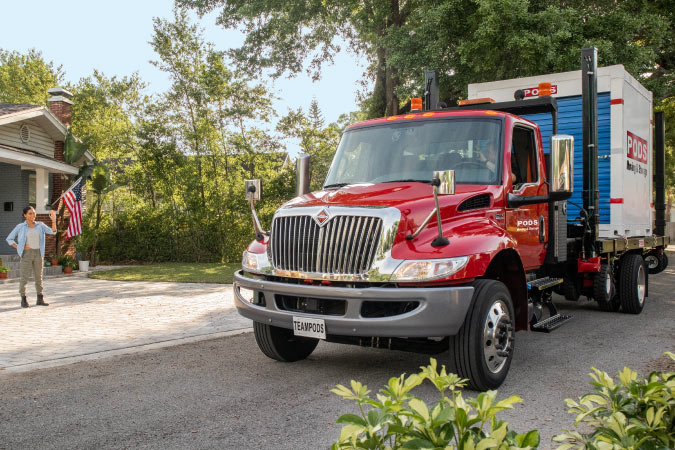
When you use PODS for your DITY move, you can end up with more money in your pocket.
Use PODS To Help With Your DITY Move or DITY Partial Move
When you use PODS for your PPM/DITY move, you can end up with a helping hand — and maybe some extra money in your pocket (PPM entitlements are equal to up to 100 percent of what it would cost the military to move you with a full-service moving team). PPM with PODS and save more. Have a portable storage container delivered right to your driveway for convenient loading on your own schedule. One month’s storage is included in the cost of every move, so you don’t have to feel rushed.
When your container is ready to go, it will be picked up and transported to your new installation. PODS will even provide weight tickets upon request. Need more time before you unpack at your new home? Not a problem! Your portable container can always be stored in a secure PODS Storage Center until you’re ready to move everything in. The best part? All active, retired, and veteran service members receive a military discount with PODS!
Start your DITY or partial DITY move the right way — by saving as much money as possible and working with a military move specialist. Visit PODS online to get a free moving quote for your local military move or call 866-556-9574 for long-distance moving.
*This article was written on behalf of PODS Enterprises, LLC (“PODS”). PODS does not warrant the completeness or accuracy of any information contained in this article and disclaims any liability for reliance upon the content herein.

Your quote in 60 seconds
Get pricing tailored to your needs!



